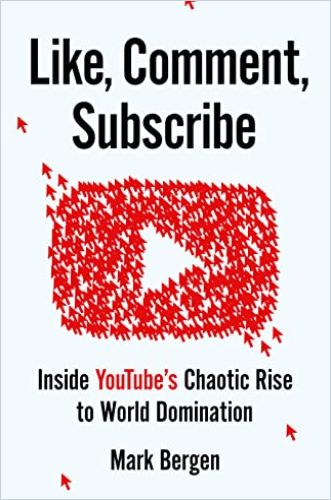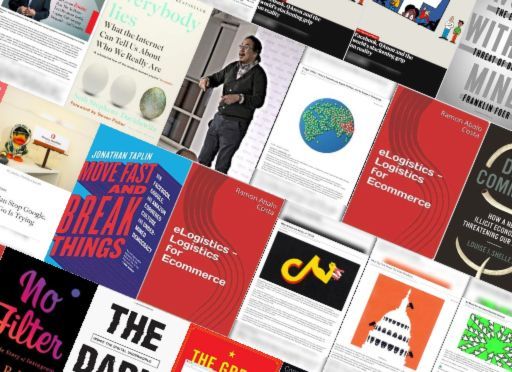YouTube’s never-ending, powerful and profitable expansion is almost unbelievable – but it’s got issues.

YouTube Never Stops
Business journalist Mark Bergen – who writes for The New York Times, Reuters and The New Yorker – offers a detailed account of the beginning, rise and outsized expansion of YouTube. From dogs on skateboards to InfoWars, Bergen presents the history of a cultural intersection to which people now upload 500 hours of video every minute.Bergen follows the thread of YouTube’s increasing business success as he covers the internal, executive decisions and the external forces that shaped its policies, growth, massive revenue, censorship and lack thereof.
Content
In 2005, while working for the company that became PayPal, programmers Chad Hurley, Jawed Karim and Steve Chen developed YouTube as a site for uploading and sharing amateur videos.
As YouTube’s popularity exploded, content moderation and copyright violation issues arose. YouTube established a team to moderate its content and to remove graphic, adult and copyrighted material.
When Google purchased YouTube for $1.65 billion on October 6, 2006, internal struggles about allowable content intensified. Viacom, which resented users uploading its intellectual property on YouTube, unsuccessfully sued Google for $1 billion. NBC and Fox united in 2008 to create YouTube’s first competitive threat, Hulu.
By 2009, YouTube had lost around $500 million. Google pressured it to introduce more ads, celebrities and branded content. YouTube purchased the advertising software company DoubleClick and increased its ads and revenue.
YouTube once regarded product placement as taboo, but it soon offered more ad space on video. It enabled independent content creators to make more money. Multichannel networks (called MCNs) managed channels, negotiated contracts and produced content as they signed up YouTubers by the thousands. YouTube provided the servers and ad space and took a 45% cut of any revenue.
The YouTube brand is synonymous with online video, and we are focused on building a sustainable, profitable business. People want to be seen, and YouTube is a stage for everyone to participate.YouTube co-founder Chad Hurley
Bergen reports that when Google co-founder Larry Page reclaimed his spot as Google’s CEO in 2011, he issued three directives. First, Page instructed employees to focus on making the company bigger. Then he called for diversifying Google’s products, with YouTube as just one of its many parts. And then Page urged employees to take on – in author Jim Collins’s phrase – big, hairy, audacious goals (BHAGs). Google set a new goal for YouTube: build “daily watch time” to one billion hours within four years.
YouTube rewired its algorithms to promote the videos that viewers watched for the longest times.Then, in 2012, it opened advertising to all users. The number of creators showing ads grew from 300,000 to nearly three million. This saturated the market. Many MCNs, some previously worth millions, collapsed. YouTube’s engineers then decided to let computer intelligence and algorithms decide how and when to place ads.
Terrorists
Terrorist organizations worldwide have used YouTube to disseminate their messages. As a result, governments worldwide have demanded that YouTube block such endless, horrific propaganda.
“YouTube Skeptics” posted diatribes on philosophy and atheism, and the ad algorithms loved them. Some creators drifted to the radical right, posting racist, anti-Islamic, antifeminist screeds. YouTube’s algorithms promoted these videos – the company says that was unintentional – and the videos’ creators earned a lot of ad revenue.
First, you’re a joke, and nobody believes in you. Then you’re a threat, and everybody’s scared of you. And then you’re obvious, and everybody just assumes that what you’re going to do is going to work.Shishir Mehrotra, former CEO of YouTube
Like most companies in the tech industry, Google prioritized AI, buying the AI company DeepMind for $650 million. When the AI found sexist or racist details in a video someone watched, it would recommend more sexist and racist videos to that viewer. The AI function couldn’t differentiate between, for example, pro-Islamic and anti-Islamic content.
By 2016, progressives were slamming YouTube for ignoring bullying on its site and for not promoting minority creators. Alt-rightists Steve Bannon and Alex Jones gained popularity and spread misinformation. YouTube pulled ads from videos that its algorithm deemed offensive, but when those creators screamed political censorship, YouTube backpedaled.
Boycott
Tiring of seeing their brands cropping up on terrorist and white supremacist videos, P&G, Walmart and AT&T pulled their ads from YouTube. The ensuing $2 billion drop in its overall ad revenue cost many creators their livelihoods.
Google experienced a cultural shift when a male employee’s memo leaked. It asserted that men are genetically better at tech than women and complained that conservatives at the company were “alienated.” After Google fired the memo’s author, right-wing pundits hosted him on their YouTube shows.
YouTube eventually outsourced its content moderation to companies such as Accenture, which delegated the task to less informed, less motivated and less sophisticated temporary, contract and vendor (TCV) employees.
YouTube wanted to be seen as responsible, as a platform propping up creators that respected shifting norms of speech, tolerance and decency (and avoided firestorms).Mark Bergen
Thereafter, YouTube did little to stop the spread of misinformation, defending itself as a library, not a media outlet – a library that was making $11.2 billion a year at the time. YouTube ended its unlimited ad policy, dropping overnight from six million channels to a select 20,000. However, the site continued to struggle to control a deluge of disinformation.
During COVID
In 2020, YouTube’s viewers watched more than 450 million hours of video a day, an 80% increase from 2019. It brought in $19.8 billion in ad revenue.
Inspired by the Black Lives Matter movement, YouTube earmarked $100 million for Black creators, purged “inflammatory white men” videos and squashed QAnon material. After the 2020 election, YouTube’s AI buried most right-leaning channels’ false stories of election fraud. Google regarded this as a major win.
From an insurgent underdog in entertainment, a money pit, something of a joke, YouTube had become one of the most dominant, influential, untamed and successful media business on the planet. In less than two decades.Mark Bergen
As YouTube expands worldwide, domineering governments such Russia’s are demanding that it remove criticism of their leaders. YouTube faces a precarious choice between expansion or censorship, but if history is any indication, it will choose growth.
A Moving Target
YouTube has exploded in so many directions, and it keeps expanding so much that you might think no author could possibly find a vantage point from which to understand the scale, process or meaning of its unceasing mutation. But Mark Bergen has the business background and reportorial acumen this massive undertaking required. To his credit, he seldom gets lost in interesting but less germane narrative threads. He’s chosen well among what must be thousands of possible stories. Bergen focuses on the business of YouTube, and the actions and choices that affected that business. He presents a stream of events in YouTube’s history in terms of its bottom line, and that’s clearly the best way to contextualize this sprawling subject. He demonstrates a lesson that’s familiar to ace business reporters: when you want to know what’s going on, follow the money.






